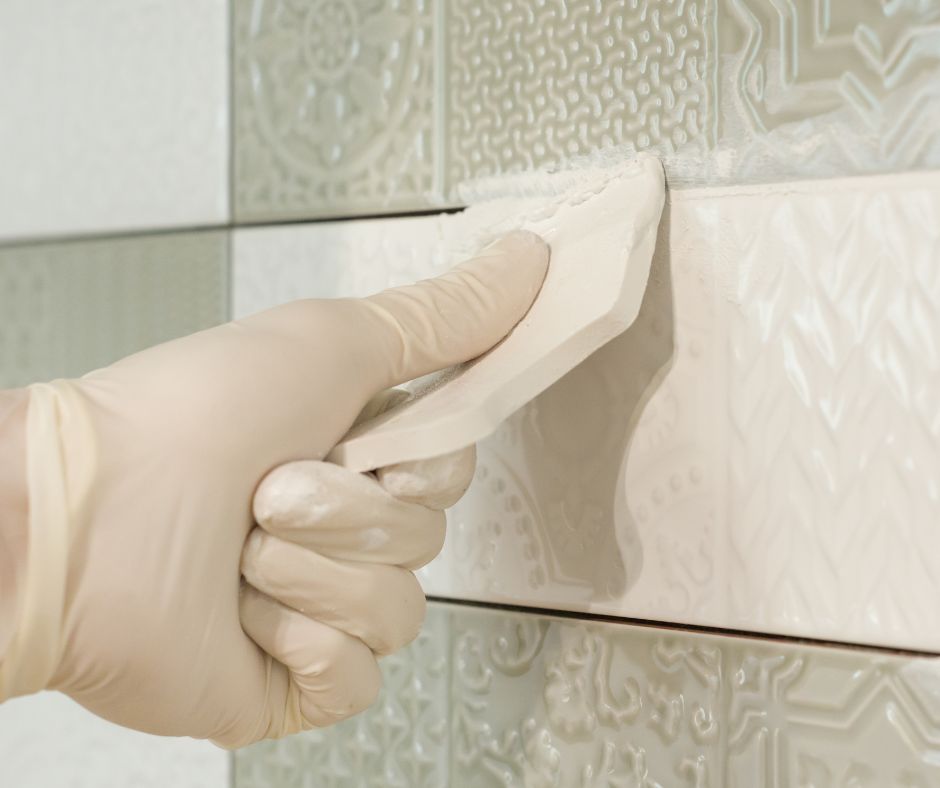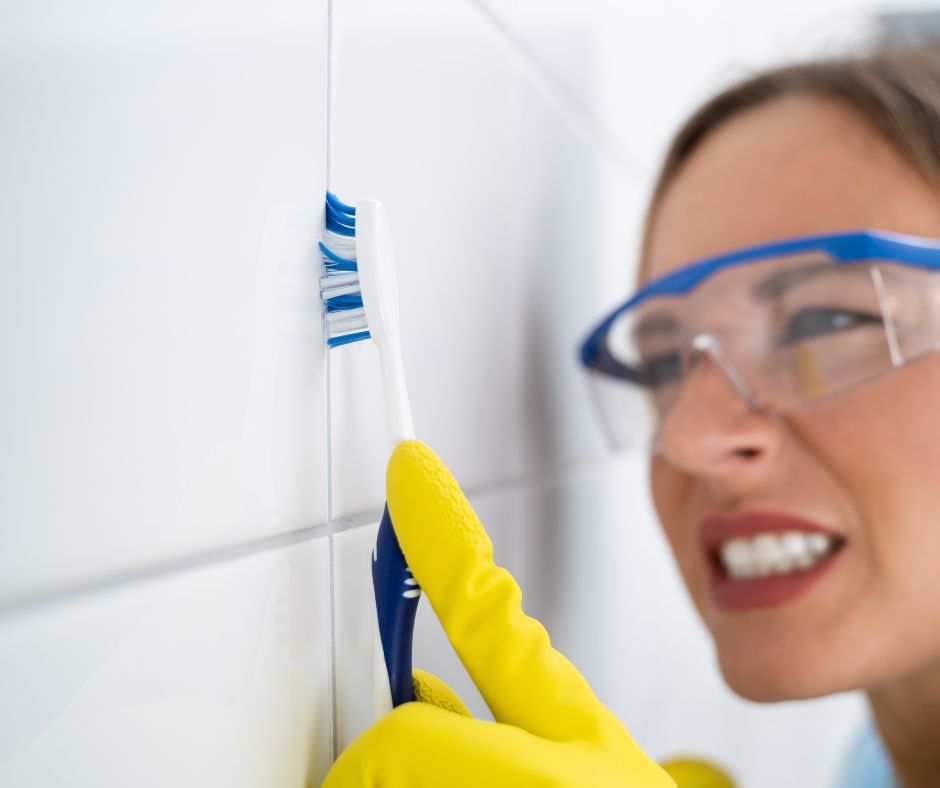Have you discovered unsightly holes in your shower tile grout that are affecting the overall beauty of your bathroom?
There’s no need to worry! Although these imperfections can diminish the visual appeal of your shower space, they are typically not serious issues. It’s vital to tackle these problems promptly to prevent more significant challenges down the line.
Here’s some great news – repairing these holes is easier than you might think!
This comprehensive guide will provide you with an in-depth, step-by-step approach to effectively mend holes in your shower tile grout. Furthermore, we’ll explore the common factors that contribute to grout damage and share preventative measures to help you avoid similar issues in the future.

Revitalize Your Shower: A Comprehensive Guide to Repairing Holes in Tile Grout
Repairing those pesky grout holes may appear daunting at first glance, but it’s actually a simple and achievable project. Allow me to guide you through the essential steps that will restore your shower to its pristine and welcoming state.
#1 Gather Essential Tools for Seamless Grout Repair
Before embarking on your grout repair journey, it’s crucial to collect all the necessary supplies to enhance the efficiency and effectiveness of the task. Here’s a detailed checklist of tools and materials you will require to ensure a successful repair:
- Specialized grout removal tools
- Caulk gun
- Grout that matches your existing tile color
- Grout float for smooth application
- A sponge for cleanup
- A bucket of water for rinsing
- Masking tape for clean edges
Don’t forget to wear gloves and safety glasses to keep yourself protected while working. Having all your tools neatly organized beforehand will streamline the entire process, minimizing stress and maximizing enjoyment.
Also Read: Epoxy Grout VS Cement Grout
#2 Meticulously Prepare Your Shower Area for Effective Grout Repair
With your tools at the ready, it’s time to prepare the work area for a successful grout repair. Begin by applying masking tape around the grout lines where the holes exist.
This step is critical as it helps secure the new grout in place, ensuring a clean and professional finish that significantly improves the appearance of your shower.
Next, utilize your grout removal tool with care to extract the old, damaged grout. Be gentle to avoid scratching the tiles, and if you’re working in a shower, take extra precautions to protect the waterproof membrane beneath the tiles. This preparation is essential, as it creates a clean and stable surface for the new grout to bond effectively.
Also Read: Why Grout Gets Stained And Damaged
#3 Thoroughly Clean the Grout Workspace for Optimal Adhesion of New Grout
Once you’ve carefully removed the old grout, it’s time to clean the workspace thoroughly. Use a slightly damp cloth to wipe down the surface, effectively eliminating all dust and debris left from the removal process.
It’s crucial to allow the area to dry completely before applying the new grout; a dry surface greatly enhances the adhesion of the new grout, ensuring a long-lasting and durable repair.
#4 Expertly Apply New Grout for a Beautiful, Flawless Finish
Now we arrive at an exciting stage! Prepare your grout following the instructions provided on the packaging.
Achieving the perfect consistency is key – it should be neither too watery nor overly thick. Use your grout float to apply the new grout over the holes, ensuring you push it in at an angle. This technique is essential as it fills all gaps and creates a smooth, even finish that enhances the overall aesthetic of your shower.
After filling the holes, level the surface with the float and remove any excess grout, ensuring a clean and professional appearance. Taking the time to apply the grout skillfully will significantly elevate the visual appeal of your shower.
#5 Gently Wipe Away Excess Grout for a Polished, Professional Appearance
After allowing the grout to set for a short duration, take your damp sponge and carefully wipe away any excess grout.
Make sure to rinse the sponge frequently to prevent grout from drying on it, as this can complicate the cleaning process. While this step requires some patience, achieving a polished, professional finish is well worth the effort. Take your time to ensure everything is perfect before allowing it to dry completely and removing the masking tape.
Also Read: Regrouting Your Bathroom Grout
#6 Optional: Seal the Grout for Enhanced Longevity and Protection
If you’re interested in extending the life of your grout, consider applying a grout sealer.
While this step isn’t required, it can provide substantial protection against moisture and stains, thereby prolonging the life of your repair. If you choose to seal the grout, ensure you wait a few days for it to fully cure before applying the sealer.
Follow the manufacturer’s instructions for optimal results, and you’ll add an additional layer of protection to keep your grout looking fresh and vibrant for years to come.

Identify Common Causes of Grout Damage and Adopt Effective Prevention Strategies
Have you ever stopped to think about what causes those unsightly holes in your grout in the first place?
The main offenders are usually moisture and aggressive cleaning methods. Grout is naturally porous and can deteriorate over time, particularly if it isn’t properly sealed. Moreover, showers are subjected to constant water exposure and frequent cleaning, which can worsen the situation.
Additionally, the natural settling of your home can lead to slight shifts that create cracks or holes in the grout.
To prevent future holes from forming, consider sealing your grout after installation or repair to protect it.
Using gentle cleaning products can also help prolong the life of your grout. Avoid harsh chemicals that can degrade grout over time.
Regularly inspecting your shower grout for any signs of damage can be highly beneficial.
Addressing any issues as soon as they arise will help prevent them from escalating into more significant problems, preserving the integrity of your tiles.
Top Tips for Successful Grout Repair Outcomes
Repairing holes in your shower tile grout is entirely within your reach, and tackling this task can help you avoid more significant, costly issues in the future.
However, if you prefer to have professionals handle this job, we are here to assist you. Our team can efficiently manage the regrouting process, relieving you of the hassle while ensuring a high-quality result.
No matter your choice – addressing those holes will help maintain your shower’s functionality and aesthetic appeal for years to come!
What Should You Do If Your Contractor Left Holes in Your Grout?
If you’ve recently completed renovations in your bathroom and found holes in the grout, it’s crucial to contact your contractor immediately. A reputable professional should ensure that no holes or imperfections remain in the grout.
Most reliable contractors will gladly return to address these issues promptly, ensuring your shower is in prime condition.
How Can You Effectively Repair Pin Holes in Grout?
To fix pin holes in the grout, start by thoroughly cleaning the area and lightly moistening the surrounding grout. Next, press a small amount of grout into the holes, smoothing the patched area with your finger for a seamless finish that blends perfectly with the existing grout.
What Is the Proper Process for Repairing Missing Grout in the Shower?
Fixing missing grout is quite similar to addressing holes. First, ensure the area is clean and free of debris. Then, apply new grout to the affected spots. Use your grout float to smooth it out, ensuring a level finish. Finally, remove any excess grout and allow it to dry fully for optimal results, ensuring the long-term durability of your work.

The Article: Holes in Shower Tile Grout? Effective Solutions Inside! first appeared on https://writebuff.com.
The Article Effective Solutions for Holes in Shower Tile Grout Was Found On https://limitsofstrategy.com
The Article Holes in Shower Tile Grout: Effective Repair Solutions First Appeared ON
: https://ad4sc.com
Comments are closed